It makes sense to perfect pioneer recipes before you really need them. The pioneers learned how to make a little go a long way, what type of food lasted well, and how to combine their precious supplies with fresh produce they could get on the way, or had grown once they settled.
So, make these often so they are stored in your head for when hard times come. And let’s face it some of these recipes are so delicious you won’t feel like it’s any kind of hardship and may want to incorporate them into your weekly menus.
As time passed, the pioneers progressed from surviving on cornmeal and molasses when the flour ran out on the journey to having eggs and milk and chicken meat available on their homesteads instead of relying on hunting for meat.
Start this week by trying out some of the pioneer recipes on this list.
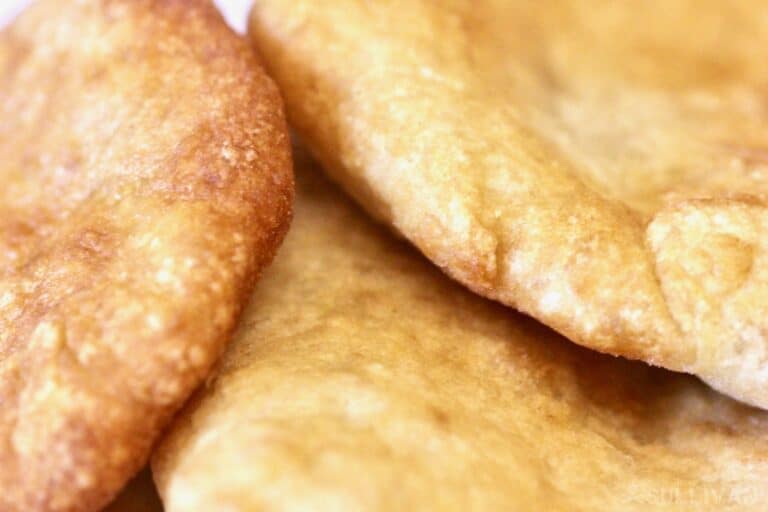
1. Native American Fry Bread
Bread is one of the basics, giving a person the carbohydrates necessary for an active existence. Pioneers picked up this recipe from the native Americans.
Made from your basic supplies this fry bread is delicious and can be served with savory or sweet toppings. Here’s how to make this easy 4 ingredient bread that uses baking powder and not yeast, so there is no time spent waiting for the dough to rise.
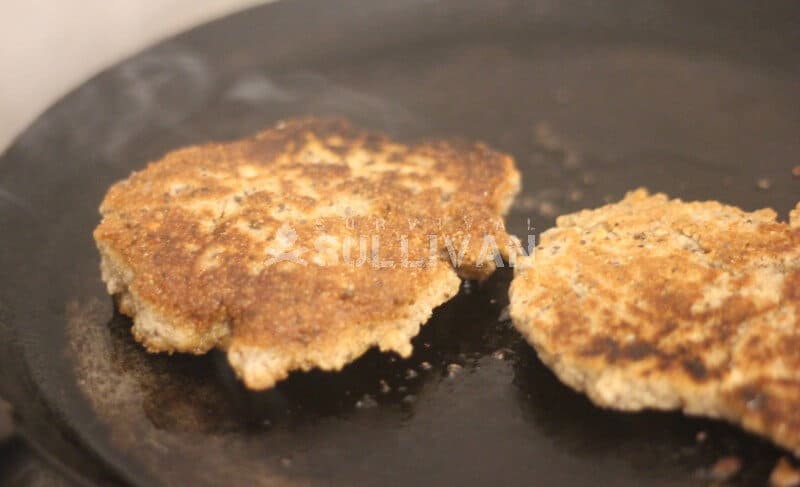
2. Pinole
You just have to give pinole, whose main ingredients are toasted cornmeal and chia seeds, a try. There are various ways to make this superfood that will keep you going on just a small amount, whether used for a nutritious drink, eaten as a cereal, or made into delicious pinole cookies.
Pioneers learned how to make pinole from the First Americans. This recipe is one to use regularly as it is so healthy and tasty – it’s not often you get that combination.
The addition of the super healthy almonds and flaxseed is optional, pioneers would usually have only had the cornmeal and chia.
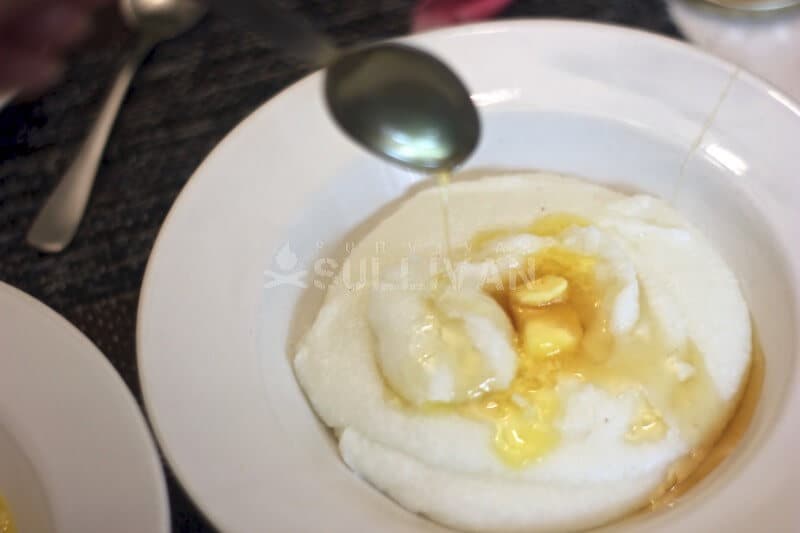
3. Cornmeal Mush
Such a simple recipe does require it to be well made, and the quality of the cornmeal counts – white cornmeal gives a smooth porridge while the coarse ground yellow cornmeal is a lot grittier.
Pioneers took cornmeal along with them as it lasted well and was filling. Once they established their homesteads they were able to grow corn and dry and grind it for use during winter, while in the summer they had fresh corn.
You can serve it with cowboy stew, BBQ meat, or fish or dress it up with some sweet toppings like apple and cinnamon for dessert. You can also alter the consistency of cornmeal mush making it with more water for a smooth breakfast porridge, or less water for a thicker mush.
You can even go so far as to make what in South Africa is known as ‘krummel pap’, translated as crumbly porridge where it is almost the consistency of couscous and is delicious with stew or BBQ meat and a spicy tomato and onion-based sauce.
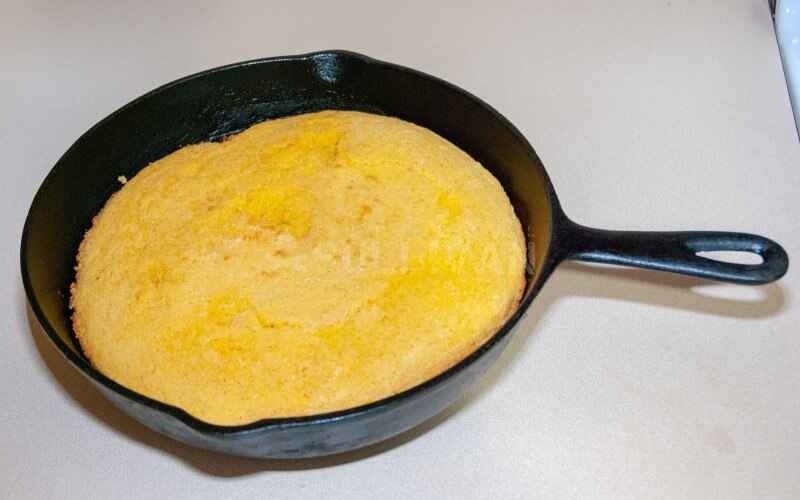
4. Basic Pioneer Cornbread
This recipe requires a cast iron skillet that you can place on the fire or heat source to get a decent crust on the base and sides of the cornbread before baking it in the oven.
Cornbread is versatile enough to go with sweet toppings, and serve as an accompaniment to savory dishes to ensure you can mop up the last of the tasty gravy.
Cornmeal bread was a staple served for evening meals along with hearty soups and stews made from what the pioneers managed to hunt successfully.
5. Red Beans and Rice
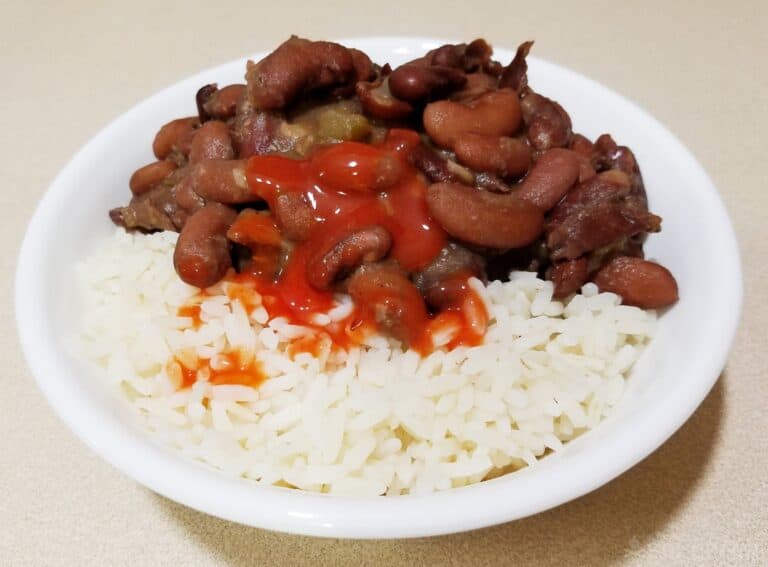
Beans and rice have the protein and carbs to provide a filling and tasty meal which made it a popular choice. If hunting was successful then the beans and rice, staples that were kept in the store cupboard, were enhanced with some meat.
This recipe revs it up with some Cajun spices and chicken stock.
6. Corn Dodgers
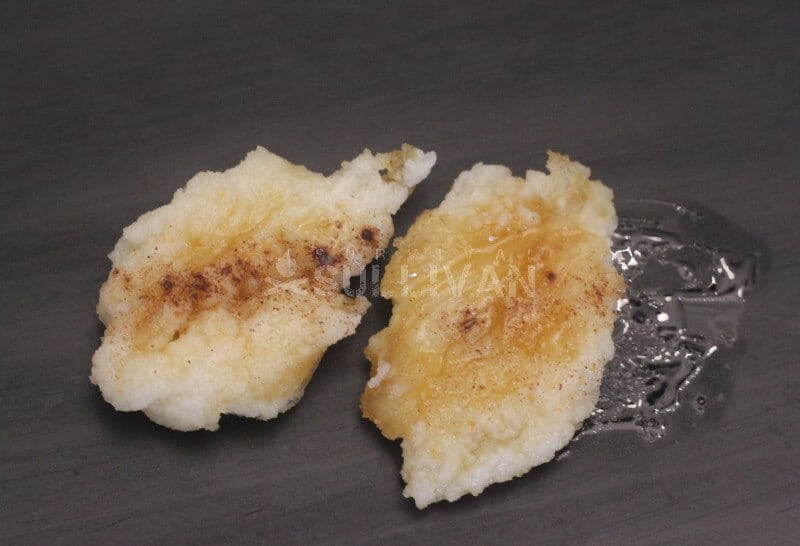
This recipe requires cooking the cornmeal with water before adding the other ingredients, then frying the little ‘dodgers’ on a cast iron skillet over the heat source.
As explained in the recipe, there are many different ways to make them – with or without milk, using butter or buttermilk, eggs or no eggs – it just depends on what pioneer cooks would have had available.
7. Pioneer Cornmeal Pancakes
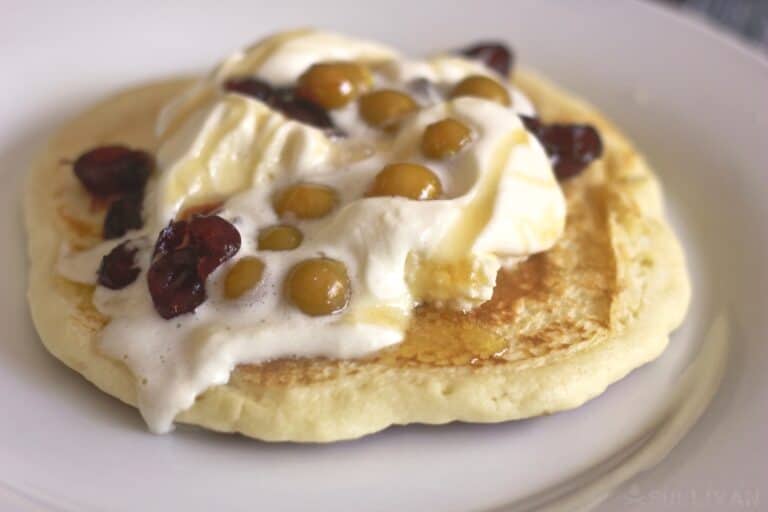
These are so quick to make and are tasty, either with savory or sweet toppings. Make them any time of the day when tummies are rumbling and you need to get food into people before they get too hungry – that’s hungry and angry.
Get the recipe here. These use a mix of cornmeal and flour for a lighter pancake rather than the heavier Johnny cakes also made by pioneers.
8. Dumplings for Dinner
This recipe makes up a big pot of dumplings that everyone can tuck into. Only four ingredients – egg, milk, flour, and salt, go into these dumplings. Roll them thin so they are not gooey or doughy but just tender and make them in a chicken broth.
Comfort food on a cold night. The early homesteaders had a milk cow if they were lucky. In those times it was a disaster if the cow got sick or went dry.
9. Pan Fried Pork Chops for Calf-Working Day
The day after Thanksgiving is called calf-working day when there was plenty to do on the pioneer ranch – like every other day except Thanksgiving – but Thanksgiving was still pretty busy in the kitchen.
The pioneers usually kept a few hogs and while much of the meat was preserved as bacon or salt pork, they were able to enjoy chops on special occasions.
They have a tasty seasoning and provide a boost of protein when it’s been a long, hard day.
10. Pioneer Bread
Head back to basics pioneer style with this savory bread using only 6 ingredients instead of up to 40 found in store-bought bread which has all the additives:
Baking the daily bread was a task that was second nature on the trail and in cabins, and there is nothing as tasty as fresh home-baked bread straight out of the oven
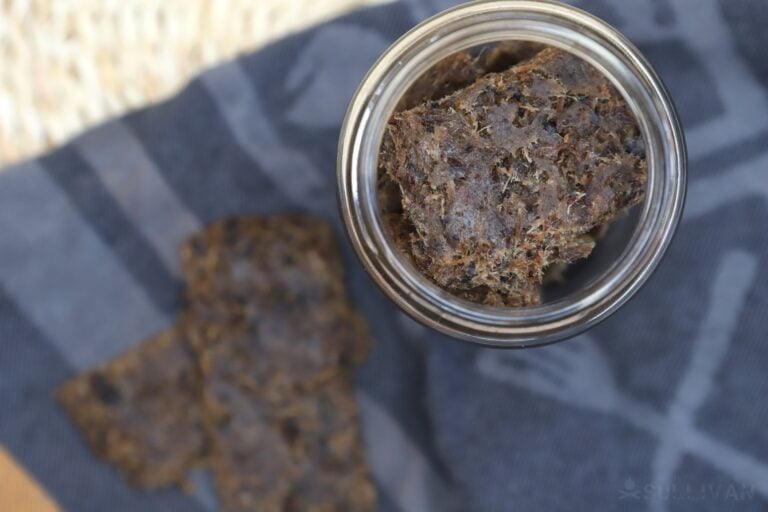
11. Pemmican
Pemmican is tasty, highly nutritious, and lasts for a long time with its mix of dried meat and juniper berries, so it is well worth practicing to make this great pioneer food for when you are really going to need it. This is another recipe the pioneers learned how to prepare from the Native Americans.
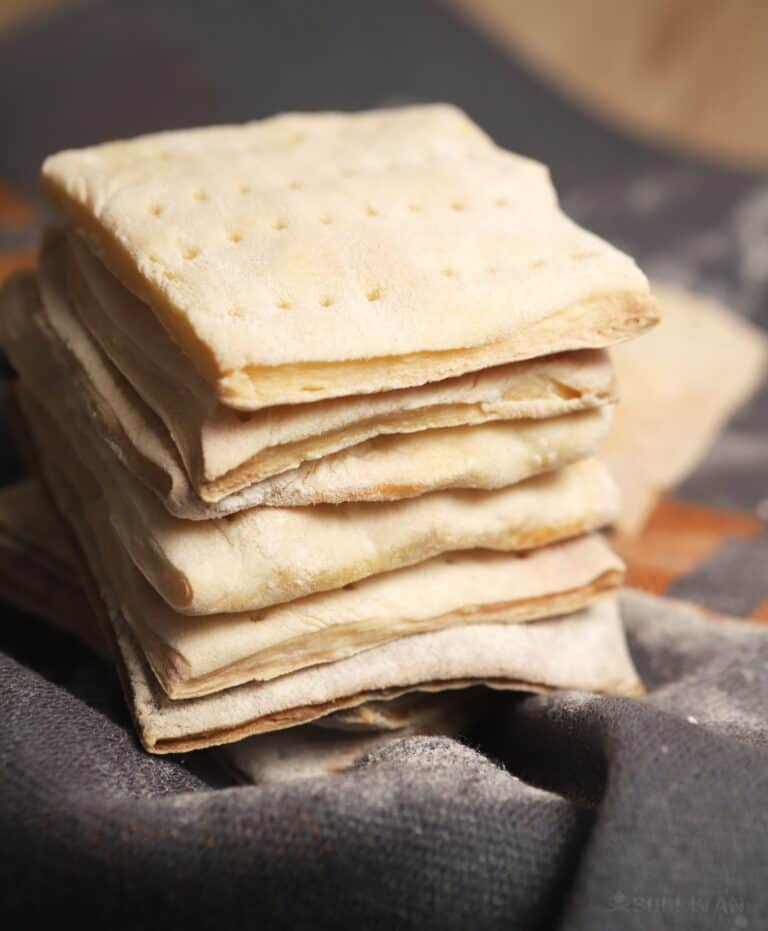
12. Hardtack
Hardtack is a survival ‘biscuit’ that can last for many years if baked and stored correctly. This recipe gives you all the information you need. Pioneers prepared these to last on long wagon journeys.
For a sweeter alternative try the South African rusk recipe which is given below – a really delicious long-lasting biscuit taken by the Dutch pioneers in South Africa on their travels into the hinterland.
13. Rusks (Boere Beskuit – Farmer’s Biscuit)
When you don’t know when next you’ll be stopping and can make an oven out of a hollowed-out anthill, then these rusks are the way to dry out your bread – well actually it’s more like a scone mix – so you have delicious boere beskuit to dunk in your coffee.
Only those with really sound teeth should eat them dry! They last for months in an airtight container. Watch this video to see how the South African pioneers dried out their bread to make it last:
14. Oxtail Potjie
This recipe comes from South Africa and was made by the pioneers. Oxtail is deliciously tender and with the addition of bacon is a rich stew. Serve with rice or cornmeal mush.
Traditionally made in a potjie – a three-legged pot that stands over a fire, like the Moroccan tagine, the word ‘potjie’ stands for both the meal and the container. See how to make oxtail potjie here.
15. Fish on a Stick
It beats doing the fish whole on a grid. With some added spice you’re set for a great meal in the outdoors, pioneer style.
16. Venison Stew
This hunter’s recipe for potatoes and venison uses what you may have successfully hunted with some vegetables from your homesteading.
As with the majority of venison recipes you need bacon- it gives flavor and some fat to the venison, which is a very lean meat. Pioneers usually had bacon on hand as it lasted well and were able to ring the changes when hunting had been successful.
17. Buttermilk Biscuits
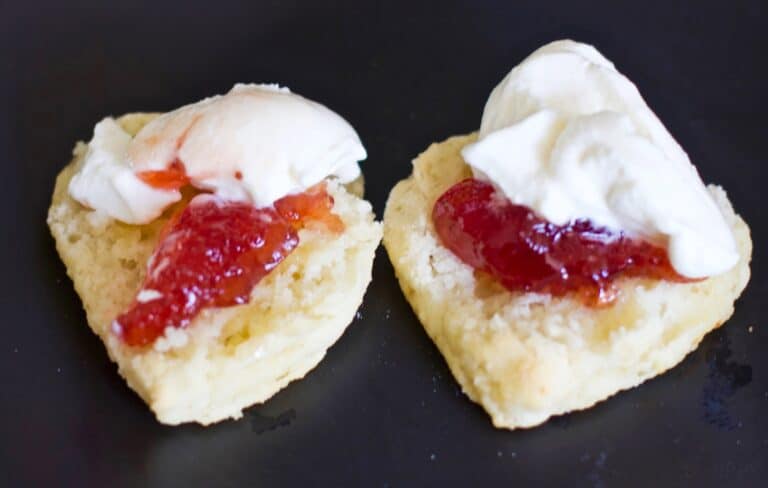
The pioneers brought along many recipes from the ‘old country’ and adapted them to their new situation.
The Scottish call them scones and the Americans call them biscuits, but whatever, these buttermilk treats are delicious. And soft. And ideal with a sweet topping like a berry preserve or with some cheese or other savory treat.
If you don’t have buttermilk here’s how to make it quick. Basically, it’s adding lemon juice or vinegar to milk to get it to curdle.
Try this Southern buttermilk biscuit recipe. Quick to make and with all dry ingredients at hand and long-life milk they are ideal for SHTF situations. You can even bake them in your Dutch oven over the coals.
18. Apricot Oat Bars
Even when you are surviving in SHTF situations kids and adults need a little sweet treat to lift the spirits, and these apricot oat bars are super healthy.
You can make ahead and freeze them for when you need them or keep the dry ingredients on hand as well as the canned apricot jam so it takes just a short while to put them together.
Remember anything you can bake in an oven you can also do in a Dutch oven over the coals. Experiment next time you are outdoors so you get the temperature right.
This handy guide will help you estimate the temperature using charcoal briquettes. Pioneers traveled with oats and dried fruit as a staple. You can substitute dried fruit in the recipe for the jam and add some sugar.
19. Vetkoek (Fat Cakes)
This traditional South African pioneer food can be compared to Native American Fry-bread in that it is deep fried.
But this recipe uses yeast not baking powder for the dough and is glossy and crisp on the outside and warm and fluffy on the inside. It is best served hot with a savory or sweet filling and makes for a delicious meal.
20. Classic Apple Pie
When the pioneers had established their homesteads and the apple trees were bearing it was time to make what has become America’s favorite pie. The classic apple pie has a rich buttery pastry crust and is filled with real apples – lots of them.
See how to make classic apple pie and you will never want a store-bought apple pie, in which you can count the apple pieces in amongst the gloopy filler, ever again.
21. Cherry Pie
Once the cherry trees were ripe for picking, another American favorite in pioneer homesteads was put in the oven – honest to goodness, real ingredient, cherry pie, popping with the sweet tartness of the cherries against the flaky buttery crust.
See how to make traditional cherry pie here.
22. Potato Cakes
When the pioneers grew potatoes this tasty recipe that is quick and easy was a good way to combine their fresh produce with the flour and oil rations they brought along with them.
Eggs from the chickens and milk from the cow made it all possible. Potato cakes were introduced from Europe by the pioneers.
23. Cured Bacon
Lots of pioneer recipes relied on cured bacon. It was a staple on the trail, and for homesteaders too, as it lasted well.
Try this recipe for curing your own bacon at home so you can perfect it before SHTF.
24. Pioneer Side Pork and Mormon Gravy
Once you have made your bacon (or bought some) you can try out this old yet simple and tasty recipe.
The gravy uses up the bacon fat – the pioneers wasted nothing, and adds juiciness to the dish when served with cornmeal, potatoes or rice. Here’s how to make it.
25. Eggless, Butterless, Milkless Cake
No eggs, not butter, no milk equals no cake in today’s world pretty much. The pioneers had to find a way around these obstacles. Using raisins kept the cake moist. Feel free to substitute dates or other dried fruit you may have available for some of the raisins.
This recipe does not call for any ‘shortening’ usually made from vegetable oils like soya bean, cottonseed or refined palm oil like some other recipes do. Frankly, that feels like a cop out by promising no butter but still including vegetable fat, so we prefer the authenticity of this one.
26. Johnny Cakes
Unlike the cornmeal pancake recipe that combines cornmeal and flour, Johnny cakes are usually all cornmeal and somewhat denser in texture.
There isn’t clarity on whether they are a Native American recipe or whether they emerged in New England – all we know is that they were a favorite pioneer food because they were so simple and relied only on having some fresh cornmeal, salt and milk with the addition of a bit of sugar.
There are so many variations for Johnny cakes it can get quite confusing. This recipe adds flour to the cornmeal mix for a lighter texture, and there are other recipes that call for buttermilk.
For the pioneers a recipe was just a guideline and they substituted with what they had – flour to replace some of the cornmeal, molasses instead of sugar, and buttermilk instead of milk.
27. Old-Fashioned Stack Cake
Large cakes were rather expensive for pioneers to make so the stack cake became a favorite at weddings and other important events simply because each woman in a gathering could bring a layer and then they would all be stacked together either with molasses or applesauce between the layers.
28. Buffalo Jerky
Buffalo jerky is a delicious and healthy snack made from thin slices of lean, ideally grass-fed, bison. Not only is it absolutely loaded with protein, but it’s also rich in zinc, iron, and other vital nutrients.
It has become increasingly popular as a “high-protein” option. And if you’ve ever tasted buffalo jerky you may have noticed its amazing texture and flavor that make it one of the best pioneer recipes to survive any food crisis – plus, without any added preservatives or artificial ingredients it provides an all-natural snacking option!
Buffalo jerky can last for a long time when stored properly and has been used by Native Americans for centuries. Its nutrition-packed punch makes it an ideal source of sustenance during extreme times when food scarcity is an issue.
If you don’t have access to bison meat, that’s ok – you can easily substitute venison, elk, or even beef if you need to. This is a versatile recipe – check it out here!
29. Chocolate Caramel
Chocolate and caramel might not be the first foods you think of having on hand when it comes to any kind of food crisis, but the reality is that having some treats was (and still is) a great way to get through tough times.
Combining chocolate with caramel produced a treat that had the potential to survive any food crisis. Its sweetness, combined with its long shelf life, offered security against bleak times. Even during periods of austerity, this simple combination which had quite a long shelf life became a source of comfort for families across the US.
Quite simply, chocolate caramel is one of the best recipes to have survived from pioneering days and still be part of our lives today.
It’s worth noting that originally, these candies were made with beet juice instead of refined sugar. Though beet juice has a lot of health benefits, it’s probably easiest just to use regular sugar when you’re replicating this one.
Here’s a simple recipe you can follow to make these tasty candies.
30. Hasty Pudding
Hasty pudding is a centuries-old dish that has withstood the test of time. First documented in the 17th century, this classic trailside comfort food was a favorite of American pioneers.
Today, it remains an attractive budget-friendly option served either sweet or savory. It is one of the best pioneer recipes to survive any food crisis because it requires few ingredients that are generally affordable and easy to find – even during economic hardship.
What’s more, it’s quick and simple to fix and filled with nourishing proteins and carbohydrates that provide long-lasting energy throughout your day (side note – it also tastes great topped with ice cream!).
One taste of this time-honored treat (recipe linked here!) and you will understand why our pioneer ancestors chose to make it continuously as they traversed uncharted terrain!
See how to make the stack cake here that uses apple butter.
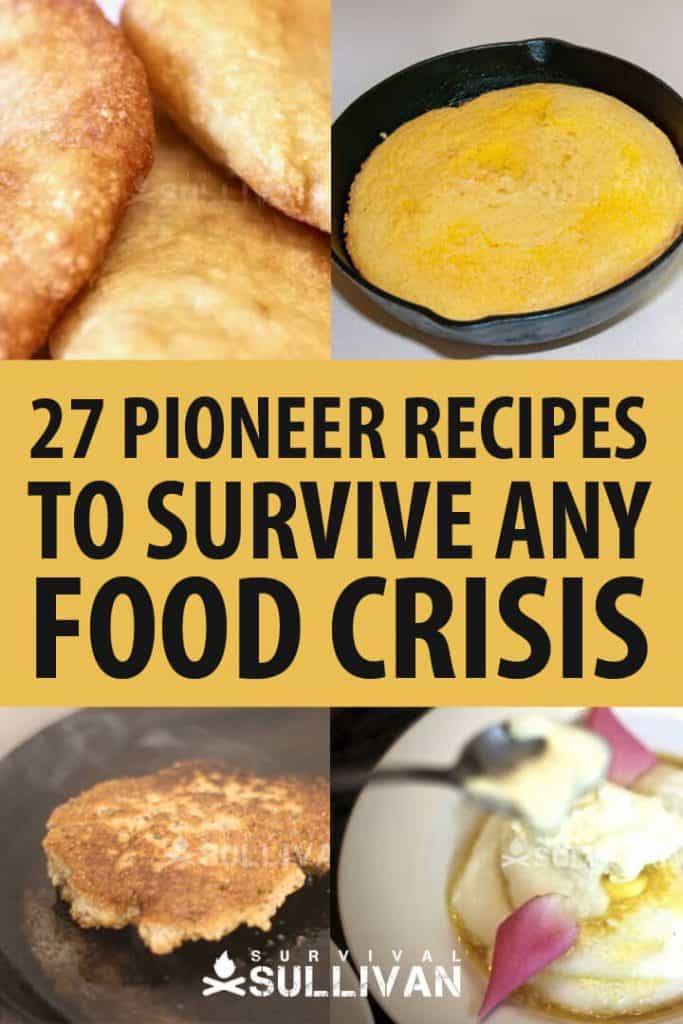

Traveler, photographer, writer. I’m eternally curious, in love with the natural world. How people can survive in harmony with nature has fueled my food safety and survival gardening practices.
At the age of 12, I found a newspaper advertisement for a 155-acre farm at a really good price and showed my parents one Sunday morning. They bought it and I happily started planting vegetables, peanuts, maize and keeping bees with the help of the local labor.
Once I married wherever we moved it was all about planting food, keeping chickens and ducks, permaculture and creating micro-climates. I learned how to build wooden cabins and outdoor furniture from pallets, and baked and cooked home-grown produce, developing recipes as I went along.

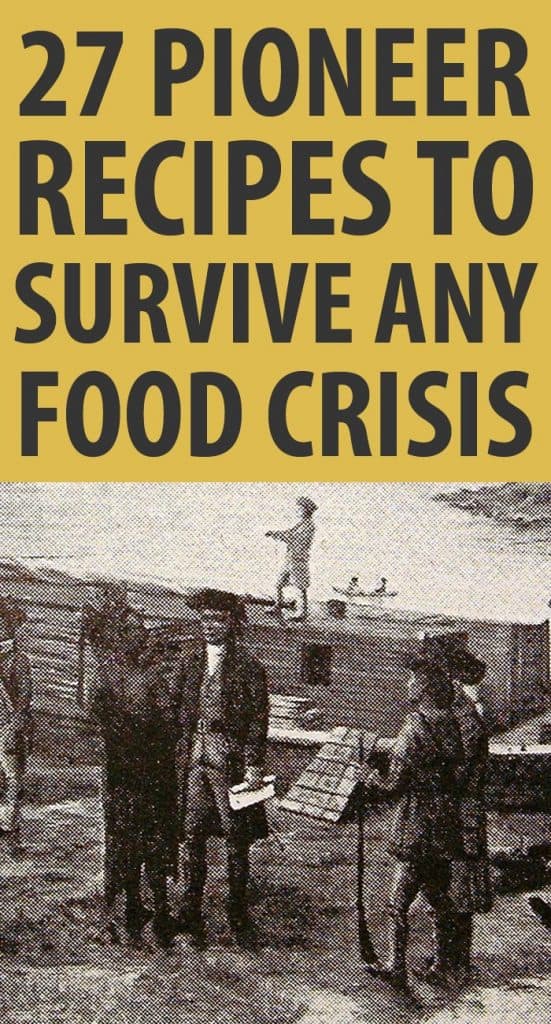
Love these
There is no recipe link for the Pinole or Corn Meal Mush…no high lighted website link for them.
Hey Joan,
they’re there, somewhere inside the text talking about them:
https://www.survivalsullivan.com/pinole-recipe/
https://www.survivalsullivan.com/cornmeal-mush-recipe/
Dan
Why can’t you find Hardtack in a grocery store now a days?
If you served it in a prison; it might incite a riot. Your other recipes sound interesting
Hello from South Africa. Have you ever had “melk tert”? Translation would probably be milk pie or milk tart. Only couple of ingredients, mainly milk eggs, little bit of sugar and little bit of flour. Or melk kos /”milk porridge” sort of. Really delicious.
I watched the video demo twice & it never said what temp to bake the pioneer bread at ???
I did the same thing but below the video on the actual youtube page it had the ingredients and said “Cook for 25-30 mins @ 350 degrees.”
350
I can think of a few more things not on the list. Pickled beans, pickled corn, saurkraut, dryed apples and sulfured apples.